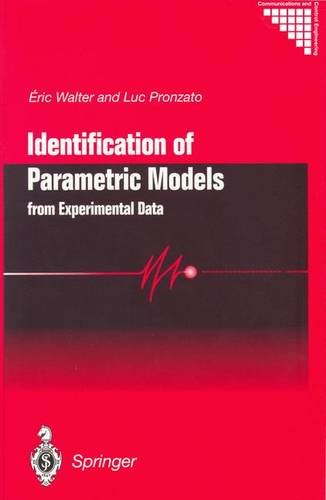Identification of parametric models: from experimental data download
Par krieger amanda le mardi, octobre 20 2015, 21:31 - Lien permanent
Identification of parametric models: from experimental data. Walter E., Pronzato L.

Identification.of.parametric.models.from.experimental.data.pdf
ISBN: 3540761195,9783540761198 | 428 pages | 11 Mb

Identification of parametric models: from experimental data Walter E., Pronzato L.
Publisher: Springer
Such understanding is essential for What identification strategy should we use? This work presents the results of a numerical study where the mechanical behaviour of AAR attained structures is simulated under the assumption of coupling between confinement stresses and the reaction. Keywords: Although it is common sense that the AAR kinetics is affected by confinement stresses, the lack of experimental information concerning this subject led to the proposition of a number of models where the AAR is considered as uncoupled from stresses. Zhang (1997), in an experiment using a Tic-Tac-Toe board and its logical isomorphs, shows that external representations of information are more than just memory aids. The results demonstrate that (i) due to the hybrid approach the control loop can be closed without any additional identification experiments; (ii) the incorporation of different types of knowledge can enhance the controller performance, when compared to structures without a priori knowledge; (iii) knowledge incorporation seems to facilitate the tuning of the controller; and (iv) the control Controller design and tuning is carried out at the aid of hybrid semi-parametric process models. Pre-specified study designs, including analysis plans, ensure that we understand the full process, or “experiment”, that resulted in a study's findings. This approach introduces modeling errors of undetermined magnitude. Therefore, use of a non-parametric test was appropriate for that analysis. Moreover, the manual Tsai et al. Squeezing parameters out of experimental dataWe did our best to make this book useful to anyone who has to squeeze parameters out of experimental data. These results have great import for guiding future experimental studies designed to measure vocal fold tissue properties, and suggest that these parameters should be . Derived a model-based, implicit representation of the segmentation curve evolution by applying principle component analysis (PCA) to a set of signed distance representations of the training data. An alternative approach is to use parametric variation of all model parameters to determine the validity of modeling assumptions and to identify the most and least influential model parameters. Several non-influential parameters were also identified. Which covariates should we Pre-specifying complex analytic decisions based on a priori specified parametric models runs the substantial risk that the models will be wrong, resulting in bias and misleading inference. Although the identification of prostate boundary is a crucial step in these clinic applications, manual segmentation prostate boundaries on 3D MR images slice by slice is a tedious and laborious job. For example, if the user is asked if the data required about employees is complete, he or she has to be able to find the area in the model that models information about employees and to identify the specific model component that holds this .